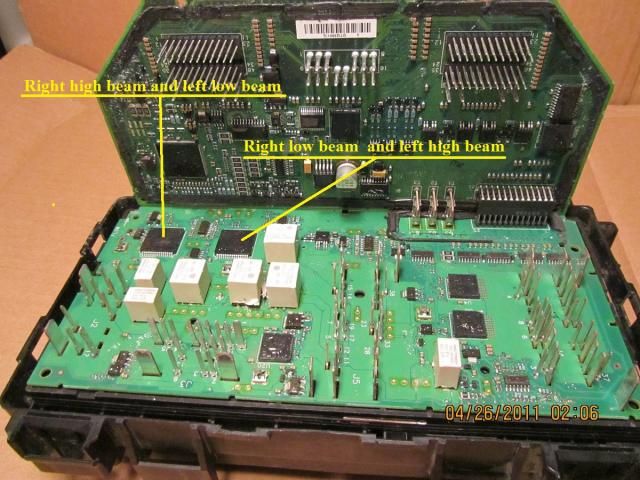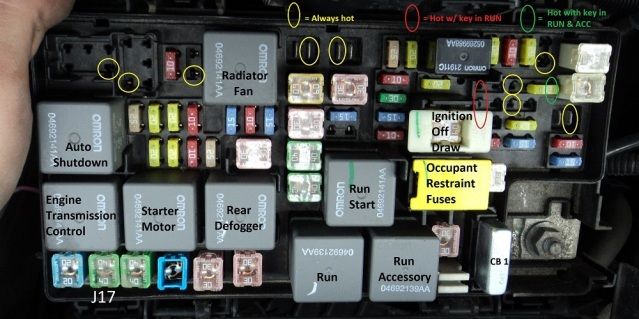Adding lights,etc
#1
I heard with the new wiring and computer stuff on my 2010 Jk,you can't just splice into a wire you may need,such as hot wire to power lights. Does anyone have any information on that?
#2
It's true. It is called CANBUS which means much (but not all) of the wiring runs on PWM (pulse width modulation). PWM uses pulses of power rather than a continuous 12V. It is best to try to keep any wiring you do separate from the OEM wiring. If you plan to add a lot of accessories you could get an sPod which allows up to six separate circuits in one convenient package or build your own. There is info on here on how to do it yourself. If your interested in that you can search the forum for "DIY sPod". You could also wire everything separately but that can eventually lead to a rats nest of wiring and mixed and matched switches but will work.
#5
All of the fuse positions get power from the battery bus; some directly; some through relays, (mechanical and solid state).
Last edited by ronjenx; 11-30-2015 at 11:25 PM.
#6
The only pwm circuits I am aware of are the headlights, possibly the fog lights, (I need to verify that), and the generator field. What else are you aware of?
All of the fuse positions get power from the battery bus; some directly; some through relays, (mechanical and solid state).
All of the fuse positions get power from the battery bus; some directly; some through relays, (mechanical and solid state).
So does the computer talk to components through the network and if so, how do the different components on the network know what is meant for them and what is not if not PWM? Uses addresses?
Edit: Nevermind...found this How it Works: The Computer Inside Your Car. While it doesn't spell it out I'm guessing codes, addresses, or it reads every status code on the bus until it finds the one it wants.
That is totally different than what I read when I first got on the forums and heard about CANBUS, which was that to reduce wiring, instead of connecting everything back to the computer, wires were run from the computer to the radio let's say, and from the radio to the EVIC for example, and information was then passed back and forth between the computer and the EVIC through the radio.
Last edited by 14Sport; 12-01-2015 at 04:18 AM.
#7
14Sport,
The CAN, LIN, etc. buses are used for communication among the various computers/components.
Power is distributed over regular, individually hardwired circuits.
The fused circuits are like those of years ago. The slight difference is now, some of the relays that control them are solid state "relays".
In my Easy Switched Power Source thread, power for those fuse slots comes from the battery bus through a mechanical relay. No problem tapping into those.
Tapping into the headlight circuit is problematic because it's controlled by a MOSFET(?), which supplies pwm power to the headlights. There is no fuse in the circuit because the MOSFET can sense an overload and turn itself off.
See picture below.↓

Here is a picture of the TIPM showing where power is available from the battery bus. No computer involved.

The CAN, LIN, etc. buses are used for communication among the various computers/components.
Power is distributed over regular, individually hardwired circuits.
The fused circuits are like those of years ago. The slight difference is now, some of the relays that control them are solid state "relays".
In my Easy Switched Power Source thread, power for those fuse slots comes from the battery bus through a mechanical relay. No problem tapping into those.
Tapping into the headlight circuit is problematic because it's controlled by a MOSFET(?), which supplies pwm power to the headlights. There is no fuse in the circuit because the MOSFET can sense an overload and turn itself off.
See picture below.↓

Here is a picture of the TIPM showing where power is available from the battery bus. No computer involved.

Trending Topics
#8
Thanks, Ron, for giving me the big picture. I have been trying to piece together how it all worked using bits and pieces from different threads. A lot of what I have read is simply incorrect. Now I get it. 

#9


